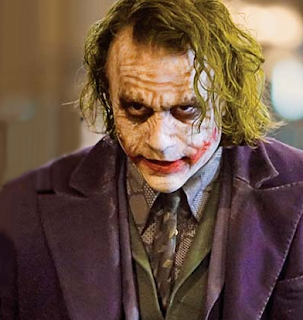Math in the Movies: Hodgepodge Edition
Most of the time I write about films where math takes a central role, but it is just as often the case that mathematics is at work in more of a supporting capacity. There are many examples of this phenomenon, even if we restrict our attention to movies that are fairly recent. To catalog each such instance would no doubt be fairly time consuming, but thankfully someone has already begun the task. It comforts me to know that I am not the only one who takes pleasure in seeing mathematics on the big screen.
Last week the Boston Globe ran an article that discusses the appearance of mathematics in a variety of recent films. In addition to mentioning the recent work on zombie dynamics, the article also discusses the link to mathematics as found in films like Casino Royale, Harry Potter and the Half Blood Prince, and The Dark Knight.
It's a short article and worth a read, but here are some highlights:
1. The ferry scene in The Dark Knight gives a modern twist on the classic Prisoner's Dilemma. The Dilemma is best understood by means of the following table (courtesy of Wikipedia):
Suppose two men have been arrested for a crime. Each is separated, and is asked by the authorities what happened. If one man betrays the other, the betrayer will go free while the betrayed will serve a long sentence. If both men betray, however, both will serve a moderate sentence, while if both men stay silent each will serve a short sentence.
One easily sees from the table that independent of Prisoner B's actions, Prisoner A will receive a better payoff by betraying (it's the difference between going free versus serving six months if Prisoner B stays silent, and serving 5 years versus serving 10 years if Prisoner B betrays). However, if both prisoners act in this way, they will both betray and end up serving 5 years, far longer than they would serve if both of them had remained silent in the first place. Therein lies the dilemma.
Of course, what happens in The Dark Knight isn't quite so interesting. In this case, the Joker hijacks a pair of ferries and tells the passengers on each that they have the controls to blow up the other boat. If neither boat is destroyed by midnight, the Joker will destroy both.
In other words, we have the following diagram:
 In this case, the strategy is clear: you want to blow up the other boat before your own boat is blown up. This strategy, of course, ignores the difficulty inherent in deciding to blow up a boat full of people - the situation is made more interesting by the fact that one of the boats is filled with convicts.
In this case, the strategy is clear: you want to blow up the other boat before your own boat is blown up. This strategy, of course, ignores the difficulty inherent in deciding to blow up a boat full of people - the situation is made more interesting by the fact that one of the boats is filled with convicts.
No doubt it would've made for a better social experiment had the Joker gone with a more traditional Prisoner's dilemma, since here there is no advantage if both parties remain silent. One could argue that this lack of appreciation for the underlying mathematics was an early indication that the Joker's plans would ultimately be foiled.
2. Even spies enjoy a bit of math here and there. The introduction to 2006's Casino Royale uses a bit of fractal geometry, in the form of self-replicating spades:
3. 6 Degrees of Kevin Bacon is, in fact, an easier game with a celebrity other than Kevin Bacon. Surprisingly, the game is easiest when played with Dennis Hopper - in a ranking of most connected actors, Kevin Bacon came in 507th.
 Sorry Kev, but even a fancy tie and a delicious last name can't change the fact that there are actors with more connections than you.
Sorry Kev, but even a fancy tie and a delicious last name can't change the fact that there are actors with more connections than you.For more links between math and the movies, I recommend taking a look at the full article. The moral here is that you can run, but you cannot hide from mathematics.
(Hat tip to Caroline for the article link.)
Psst ... did you know I have a brand new website full of interactive stories? You can check it out here!
comments powered by Disqus


